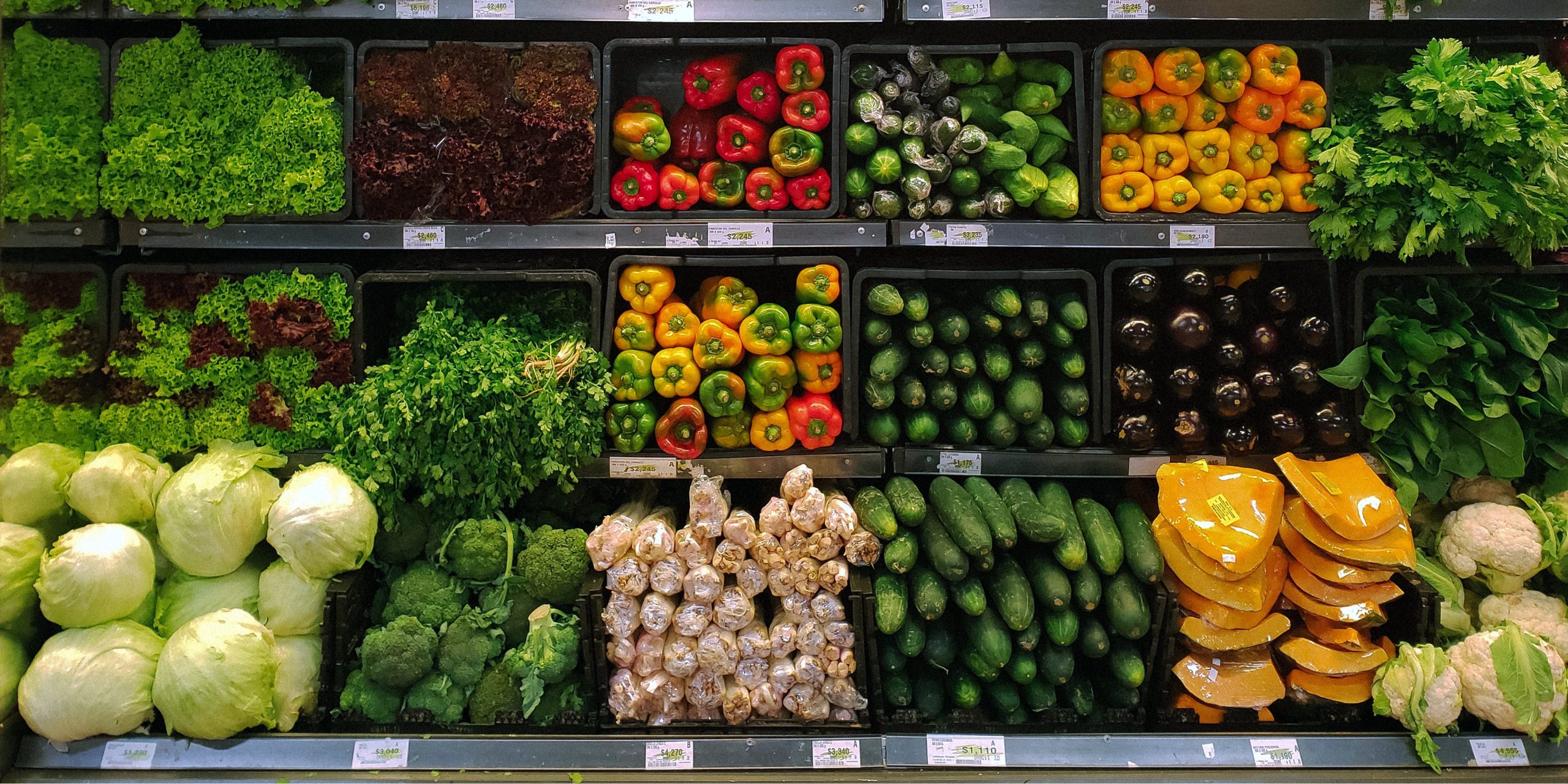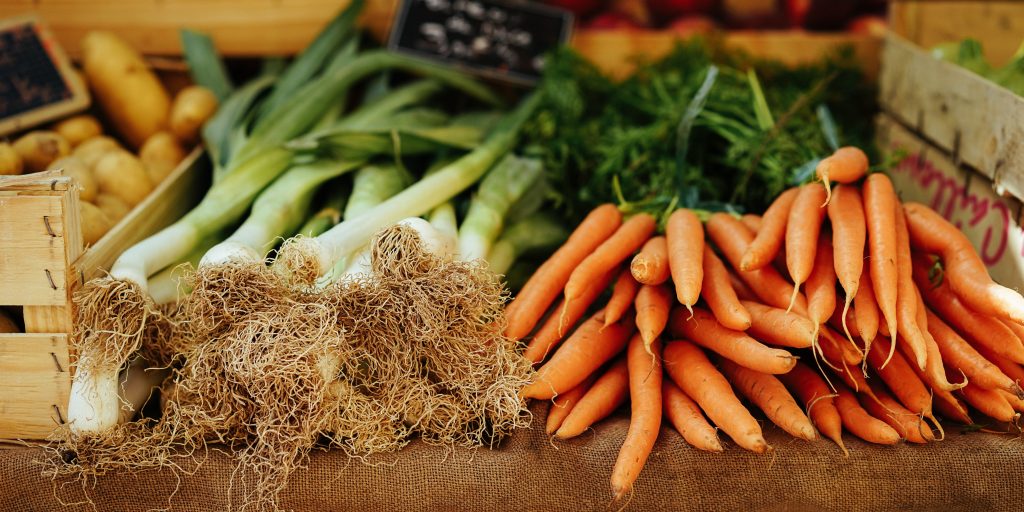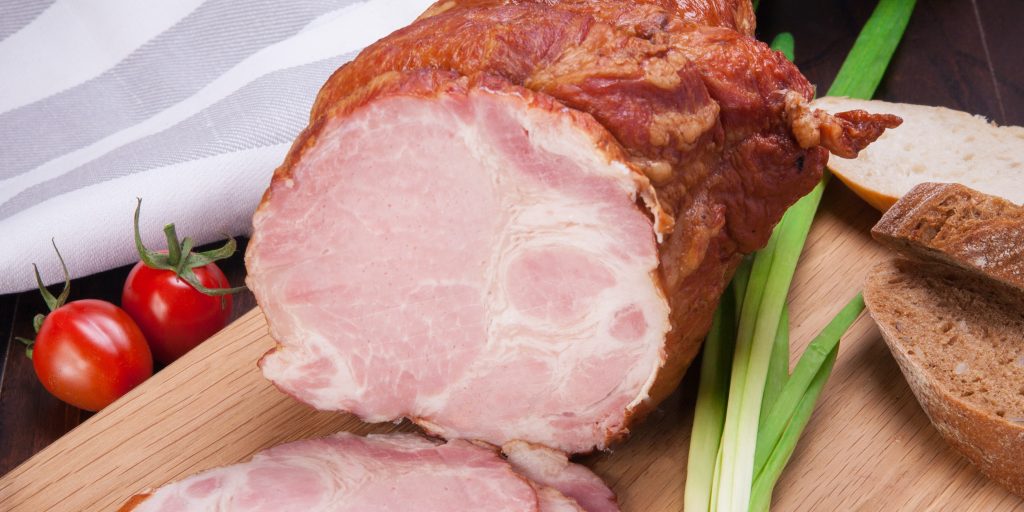
We’ve seen how local food is good for the environment, our health, and our community. But did you know that safer local food is also a benefit? Small local farms have less chances of selling contaminated foods.
Raw agricultural products always carry some risk of contamination. There are bacterial and chemical threats. The longer it takes food to get to you, the higher the risk of contamination.
When you buy local, you lower the steps it takes for your food to get to your kitchen. The less time and steps it takes, the less chances there are for contamination. Buying safer local food means you buy from smaller farms, and thus avoid food safety issues from shipping and distribution.
Foodborne Illness
Though the American food supply is one of the safest in the world, we still have significant amounts of foodborne illness. Our Federal government estimates there are 48 million cases of foodborne illness each year, enough for about 1 out of every 6 Americans.
Foodborne illnesses each year result in 128 thousand hospitalizations, and 3000 deaths. The five most common bacteria and viruses come from norovirus, Salmonella, Clostridium perfringens, Campylobacter and Staphylococcus aureus.
Norovirus is very contagious, and is usually spread when an infected person handles raw or cooked products. It is the top cause of foodborne illness in the US. Over half the outbreaks are located in care facilities. 70% of cases come from infected food workers, not from the grocery store or local farm.
Salmonella is a bacterial threat found in vegetables, chicken, pork, fruits, nuts, eggs, beef and sprouts. You can limit risk by making sure your animal products are thoroughly cooked. Prepackaged produce can also be contaminated with salmonella, so buying local and unpackaged can lower your risk.
C. perfringens is found on meat and poultry, and infections are commonly found when food has been sitting warm for a long time. Campylobacter comes from raw animal products, and staph comes from infected food workers.
The majority of foodborne illness comes from improper handling of foods, or improper cooking of them. Your animal products should be cooked properly, no matter where you buy them. Your produce should be purchased unpackaged and whole whenever possible. That’s easy to do when you buy safer local food.
Local animal products are less likely to be processed in large quantities, and may carry less risk of foodborne illness. Talk with your farmer about how their animal products were prepared. Slaughter and processing facilities are prone to bacterial spread.
Many outbreaks that are linked to animal sources come from intensive production farms, which leads to the spread of highly virulent pathogens. Safer local food can be found at smaller animal farms.
From 2009-2015, CDC statistics show that 87% of 5022 outbreak reports came from a preparation location, the majority of them restaurants. Most foodborne norovirus comes from ready-to-eat foods.
The FDA reports that we import about 15% of our overall food supply. Our food comes from more than 200 countries or territories. We import 32% of our fresh vegetables, 55% of fresh fruit, and 94% of seafood annually. The wider the geographic distribution, the more chances for contamination to happen before the food gets to your kitchen.
From 1996-2000, there was an average of 3 outbreaks a year from imported foods, while there was an average of 18 per year from 2009-2014 from imported foods. Risks from imported food are rising partly because we are importing a lot more food.
You are more at risk from foodborne illnesses from a poorly run restaurant than you are from cooking at home properly. But there is a reduction in risk of foodborne illness when you buy safer local food. The fewer points of contact your food has with packaging, conveyors, transportation, etc., the lower your risk of it becoming contaminated with bacteria and viruses.
Chemical Contamination
It’s not just foodborne illnesses that are a threat to the health and safety of our food supply. There are also many pesticides and chemicals sprayed on much of the food we consume.
Many farms spray chemicals on produce after harvest to help maintain freshness or improve appearance. These sprays can maintain moisture levels, inhibit mold growth, or stop sprouting. The longer food is to be stored or transported, the more likely it will spoil. So many fruits and vegetables are treated with fungicides, disinfectants, gas, fumigants, coatings, and other chemicals.
This doesn’t mean all chemicals are bad. The FDA monitors pesticide usage both domestically and from imported foods. However, most foods are not sampled, and not all pesticides are something you want to ingest.
Safer local foods from small local farms aren’t stored long term or transported long distances to get to you. The produce you find at your farmers market or CSA likely will not be sprayed with chemicals to preserve it.
Imported Foods and Pesticides
Every year, we import more food for human and animal consumption. The FDA analyzes samples from both domestic and imported food sources. However, imported foods are not as compliant as the domestic foods.
In 2017, the FDA checked over 6 thousand human food samples, about 1800 domestic and 4300 imported sources. Food came from 48 states and Puerto Rico, and over 100 countries. They found that 96.2% of the domestic foods were compliant with federal standards, and 89.6% of imported foods were compliant.
The FDA found that there were no pesticide chemical residues in 52.5% of domestic and 50.0% of the imported food samples. That means that though the majority of human food samples were compliant with regulations, that there may still be pesticide residues on them.
The FDA can’t analyze every food that comes to our markets. However, they do selectively analyze for countries and products more likely to be in violation. There was a slight increase in violations in 2017 because they started sampling kale, lettuce and cilantro more aggressively.
When testing, about half of the total FDA sampling is targeted at fruits and vegetables. The rest is spread among animal products, grains, and honey. For imported sampling, 70.7% of foods sampled were fruits and vegetables.
For imported fruit, no pesticide residues were detected in almost 40% of the samples, but nearly 8% of the samples had violative residues. For vegetables, 42% had no residues but over 12% had violative residues. For domestic samples, only 2% of the fruit and 9% of the vegetables were in violation. Some imported produce has higher levels of pesticides.
Out of the 68 domestic violative samples, 64 of them had no-tolerance violations, meaning the EPA doesn’t allow any of those pesticides to be used at all. Nine of the 68 also has over-tolerance violations (some had both). Out of the 443 import violative samples, 427 had no-tolerance violations, and 71 had over-tolerance violations (55 had both).
The FDA reports that historically, import foods have a higher violation rate, and 2017 showed the same trend. The violation rate was over 2.5 times higher in imported foods than domestic ones. The majority of violations for imported foods are no-tolerance violations.
Those fruits and vegetables that warrant special attention due to previous violations include apricots, carrots, celery, cilantro, dates, eggplants, figs, ginger, lettuce (head and leaf), onions, papaya, peas, hot peppers, persimmons, pineapple, prickly pear, radish, raisins, spinach, and string beans.
As stated above, we import about 15% of our overall food supply. Our food comes from more than 200 countries or territories. We import 32% of our fresh vegetables, 55% of fresh fruit, and 94% of seafood annually.
We sample imported foods more extensively, and target countries and products that are more likely to be contaminated with pesticides. That’s a good strategy, but only 6000 samples were done in the fiscal year 2017. Imported foods are 2.5 times more likely to be in violation. Exactly how many imported foods are entering our food supply that aren’t checked?
The EPA sets the regulations that the FDA then samples for. How confident are you that the EPA’s pesticide tolerance levels are right for you and your family?
Maryland Local Food Regulations
However, don’t assume that local food is always the safest choice! Likely it is, but it’s best to be aware of what licensing and inspections are done on your local food.
For meat, farmers must have their animals slaughtered with USDA inspection. Bison and rabbits can be sold on farm without any inspection. Chickens can be slaughtered and sold directly to consumers without inspection for farms that process less than 20,000 a year. Those chicken farmers do need a license to sell at a farmers market.
For raw produce and raw honey, no inspections or licenses are needed to sell at farmers markets. For canned goods or already cut produce, a license is required.
That doesn’t mean that your local food at the farmers market isn’t safe, but it does mean some is unregulated. However, when you buy local, you are buying from a small farm that relies on the continued goodwill of their customers. You can get to know your farmer and learn more about their foods.
For the farmers, less oversight means they have more time and money to put towards growing healthy foods for everyone. They don’t have to spray produce with season-extending chemicals because their food is sold fresh and locally.
For the customers, you can find the best farms for you and frequent them. You may be able to visit the farms. You certainly can talk with the farmers. Ultimately, you can buy fresher, more delicious and safer local food and help out your community!
Avoiding Risks
When it comes to biological threats, animal products are the riskiest. Make sure you cook your meat thoroughly. Buy your eggs from small farms that let chickens roam instead of growing them in a tight enclosed space. The healthier the animal is, the less chance of contamination.
For produce, pesticides are more of a threat, according to the FDA testing. Imported produce is more contaminated than domestic. And small, diversified farms can raise foods with less pesticides. The small farmer is likely not growing huge monocropped fields, and thus likely has less pest pressure. In addition, she won’t be spraying her produce with pesticides post harvest, since the food will be headed straight to her customers.
Buying local means buying small. Buying small means more attention to foods and their safety. It means less time and locations to travel to, and food grown for taste, not longevity. All of this adds up to a safer local food source and a healthier you!





